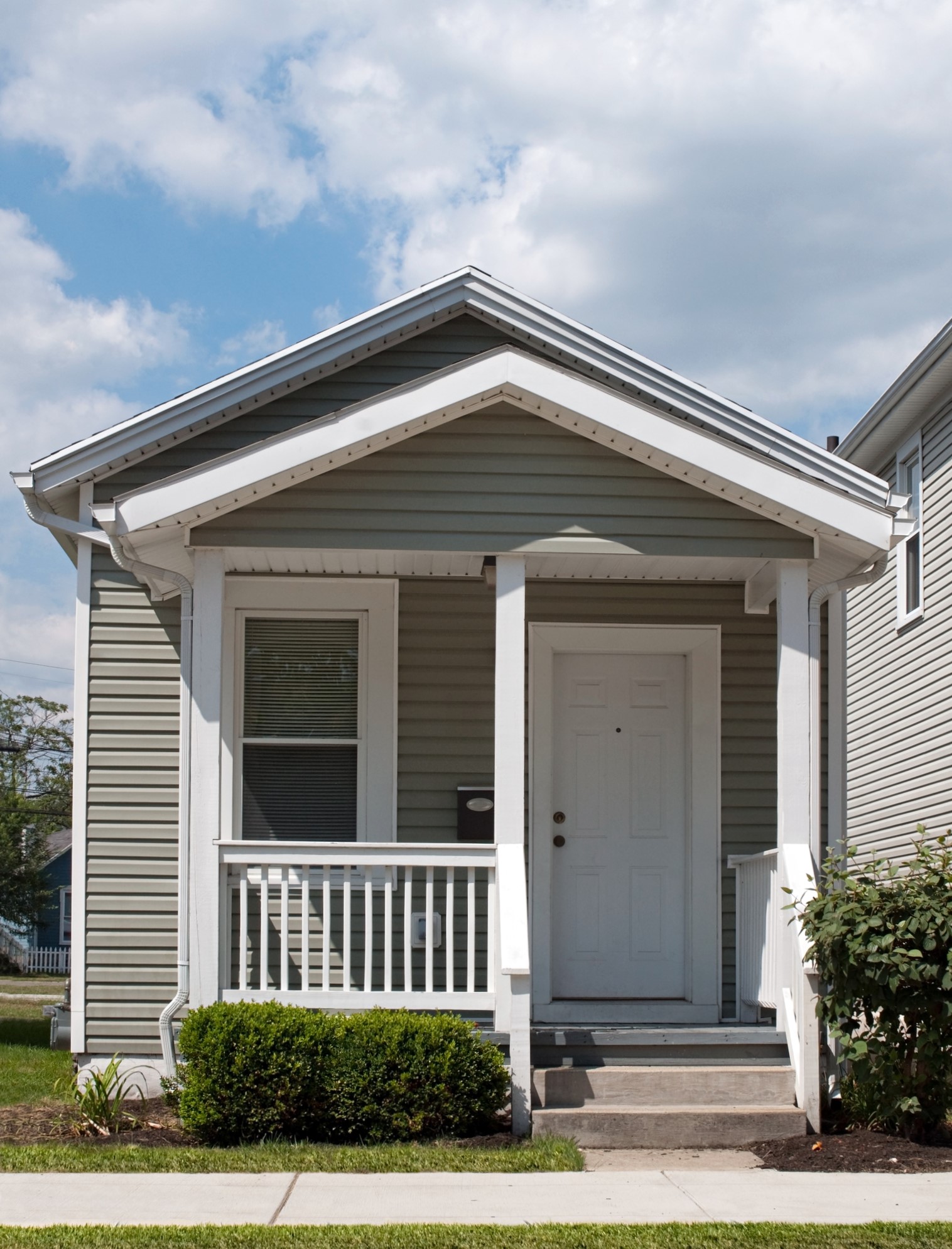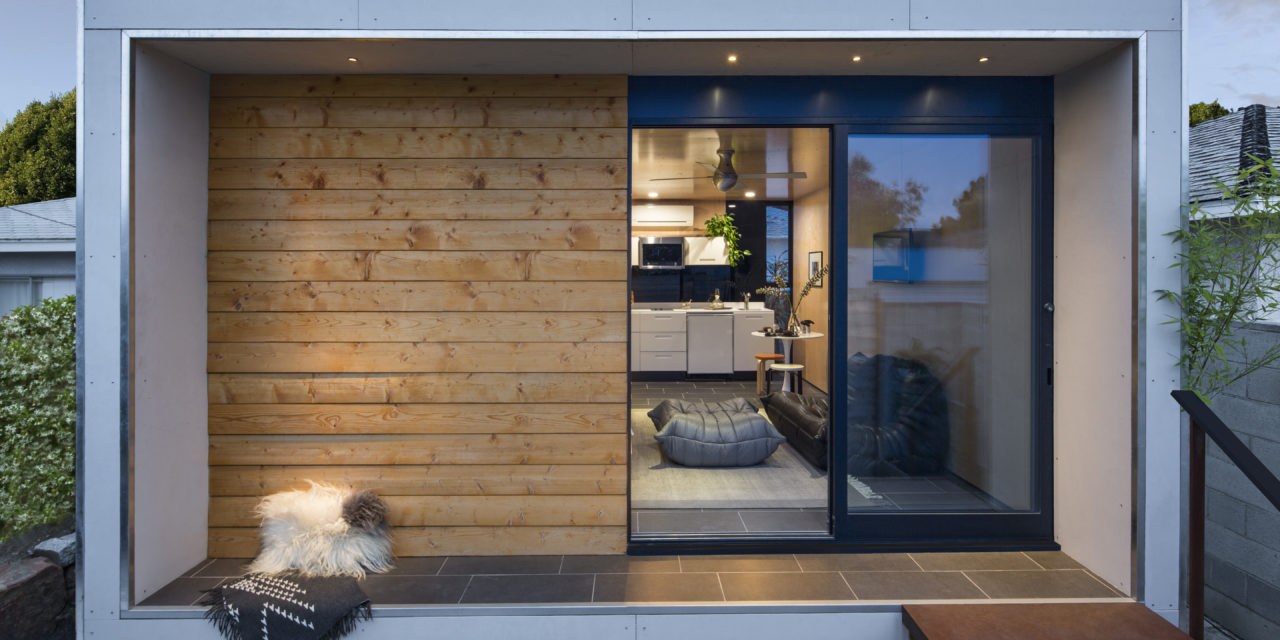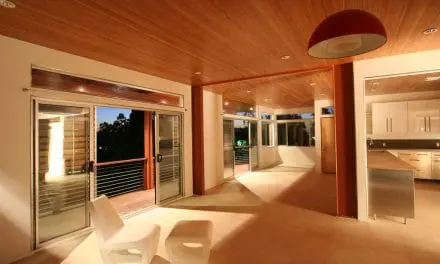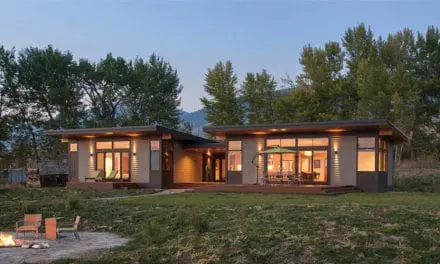Image courtesy Plús Hús
By Catherine Poslusny
As you age, things change, and you need different things from your home—even if you love it. You might want to downsize to save on money and maintenance; live closer to family or caregivers; or move to a more accessible situation. Each year, more and more older Americans face the same choice: stick with a beloved home that’s just not working anymore, or leave and endure the financial and emotional stress of moving, and perhaps a loss of independence. Accessory dwelling units (ADUs) offer a third option—one that helps seniors wanting to age in place—for economical, highly sustainable living.
ADUs are secondary, smaller living quarters added onto or next to an existing house on the same property. They’re sometimes called granny flats or mother-in-law suites or guest cottages. ADUs are different from “tiny homes”: the latter emphasizes homes on wheels and a less-rooted lifestyle.
ADUs have undergone a renaissance in recent years, especially in more urban environments, thanks to an aging US population and the rising cost of housing across the country. Beyond sustainability, ADUs can offer many benefits for homeowners as they age, plan for retirement, or adjust to new mobility issues. In fact, an ADU can reinforce closeness to family or caregivers; or provide a new income stream.
Seniors age in place with ADUs
In 2020, over 17% of Americans were 65 or older, and researchers expect that percentage to rise in the coming decades. And, older Americans often draw down their home equity to improve their retirement security, pay off high-interest debts, invest in home improvements, and make intergenerational investments like paying for their children’s education. As equity diminishes, it makes less sense to sell off this vital asset. Plus, with medical care costs, rental rates, and retirement home fees soaring, cash from a home sale may not stretch far.
An AARP survey found that 67% of adults would consider living in an ADU, and around 33% said they’d consider building one. That’s not surprising, given that investing in an ADU on their property gives older adults the flexibility to create a living arrangement that fits their specific requirements to age in place. Most importantly, they don’t have to leave familiar communities and neighbors.
Green, affordable living in a more manageable space
As you age, cleaning and maintaining an aging home can become more difficult and expensive. ADUs offer the chance to downsize to a new, eco-friendly living space with a smaller footprint. And since they’re so customizable, you can choose the style, configuration, and square footage that work best with your site and your lifestyle.
New, sustainable construction is generally tighter and more efficient than older builds. You should expect to use less energy, and save money, on heating and cooling a smaller, more-efficient space. ADUs often take advantage of passive heating and cooling, solar panels, low-flow plumbing fixtures, and other sustainable strategies that further minimize your monthly costs and carbon footprint. Plus, if your family member or caregiver moves onto your property, you cut down on their daily car rides and commute times.
The cost of building an ADU can range from $40,000 to the hundreds of thousands, depending on the size, manufacturer, and design choices. Though the cost can vary, building an ADU is often significantly cheaper than building a traditional house. And factory construction can save money. (Factory-made ADUs also reduce construction waste compared to traditional construction, reducing the carbon footprint.) Many seniors defray (or pay for) the investment by renting out the ADU or the primary residence.



Making space for multigenerational living
ADUs might be considered worth the investment just because they allow older adults to age in place. There’s the option for a senior to have a family member or caregiver live on the property without sacrificing either’s privacy or personal space. Even a compatible tenant who agrees to provide transportation or light maintenance or caregiving duties can prove to be a godsend.
- Companionship: Loneliness has been linked to a whole slew of negative health effects, including a weakened immune system, high blood pressure, heart disease, obesity, depression, anxiety, and cognitive decline. ADUs, whether used for family members or renters, can offer companionship and social interactions that help curb feelings of loneliness or isolation.
- Stronger family ties: Close, but independent living with immediate and extended family (even friends or former neighbors) creates memories and strengthens bonds.
- Assistance with young children: Parents of small children may be just as excited for your help with caring for little ones. Good schools and other community-based opportunities may be unaffordable for young families. And you’ll be grateful for some help with your needs as the grandchildren grow and you age in place.
- Improved finances: ADUs and multigenerational living allow everyone in the family to save money on housing costs. Not to mention, an ADU investment may increase the value of your property by an average of 35%.
Stay in your community
One of the biggest selling points for ADUs is that they empower older adults to age in place. Moving to another neighborhood, especially at an older age, can be jarring and isolating. Mobility issues, distance from a caregiver, challenging maintenance issues, or finances force many seniors from older homes. A new ADU may provide solutions, avoiding the stress of moving while retaining social ties to a familiar community.
Studies have shown that seniors want to be socially integrated, though many assume that isolated older adults are alone by choice. Though elderly homeowners may or may not be interested in sustainability, environmental issues are concerning. The health effects of aging can make individuals more at risk from air quality issues, extreme weather events, excessive heat, and dependence on medical devices and caregivers.

Local building codes are changing
In decades past, zoning regulations sought to keep people from building ADUs on their property. Now, as the American population ages and the affordable housing crisis continues, many states and municipalities are shifting the focus. Ten states, the District of Columbia, and many individual municipalities have changed or added laws to make it easier to build ADUs, cutting down on zoning restrictions and lengthy approval processes.
To find the rules for ADU construction and rental in your area, contact your local office in charge of land use and permitting. AARP offers tons of resources on ADU construction and other ways to age in place. And The American Planning Association advocates for legislation and policy changes to solve the housing crisis. For more specifics on how manufactured ADUs can reduce your environmental impact while saving you money, check out “Synergies in Sustainable Modular Homes Bring Savings.”
The author:
Catherine Poslusny is a freelance writer and content marketing specialist based out of Norman, OK. You can find her at catherinerosewrites.com.








